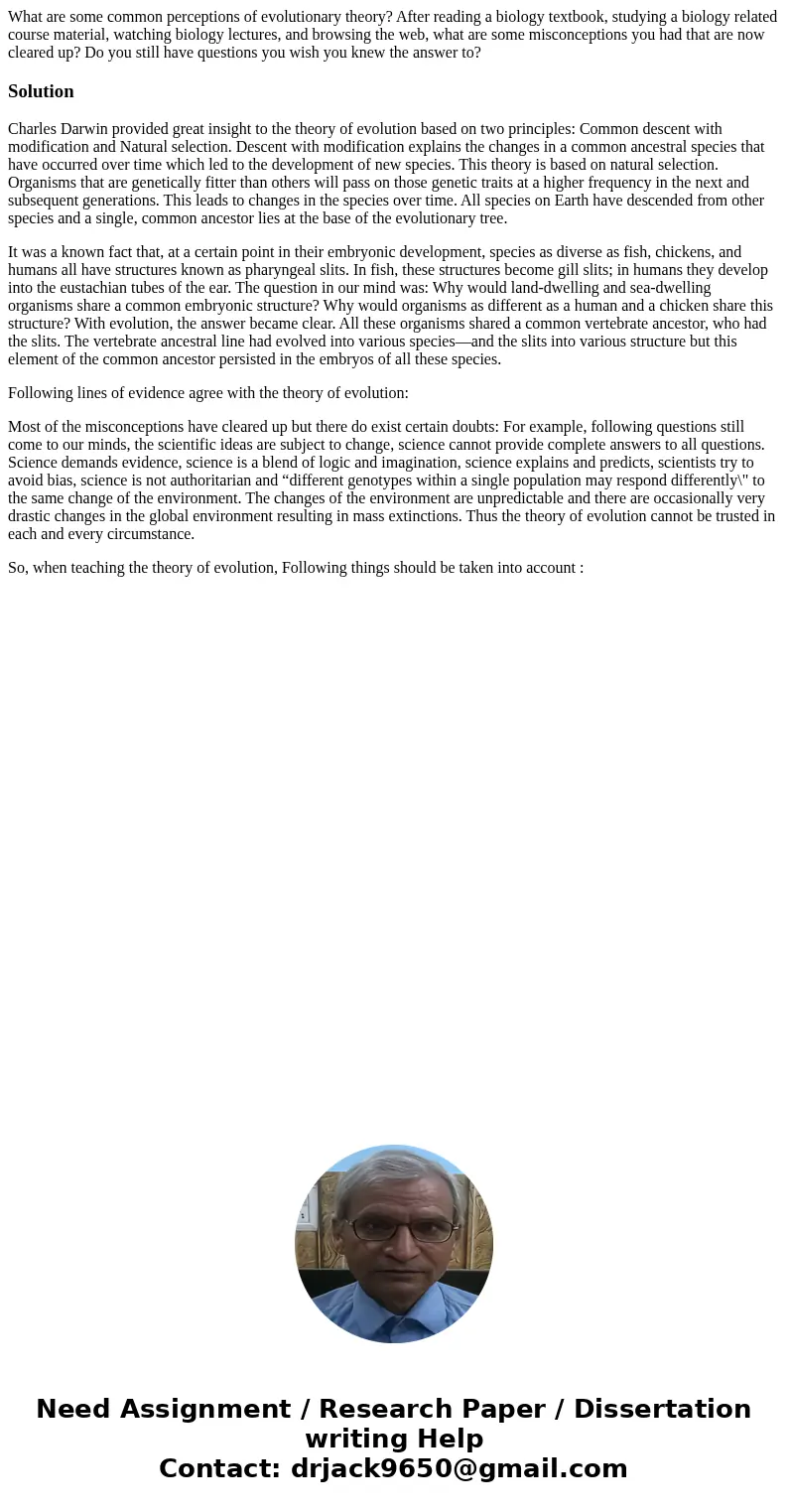What are some common perceptions of evolutionary theory Afte
What are some common perceptions of evolutionary theory? After reading a biology textbook, studying a biology related course material, watching biology lectures, and browsing the web, what are some misconceptions you had that are now cleared up? Do you still have questions you wish you knew the answer to?
Solution
Charles Darwin provided great insight to the theory of evolution based on two principles: Common descent with modification and Natural selection. Descent with modification explains the changes in a common ancestral species that have occurred over time which led to the development of new species. This theory is based on natural selection. Organisms that are genetically fitter than others will pass on those genetic traits at a higher frequency in the next and subsequent generations. This leads to changes in the species over time. All species on Earth have descended from other species and a single, common ancestor lies at the base of the evolutionary tree.
It was a known fact that, at a certain point in their embryonic development, species as diverse as fish, chickens, and humans all have structures known as pharyngeal slits. In fish, these structures become gill slits; in humans they develop into the eustachian tubes of the ear. The question in our mind was: Why would land-dwelling and sea-dwelling organisms share a common embryonic structure? Why would organisms as different as a human and a chicken share this structure? With evolution, the answer became clear. All these organisms shared a common vertebrate ancestor, who had the slits. The vertebrate ancestral line had evolved into various species—and the slits into various structure but this element of the common ancestor persisted in the embryos of all these species.
Following lines of evidence agree with the theory of evolution:
Most of the misconceptions have cleared up but there do exist certain doubts: For example, following questions still come to our minds, the scientific ideas are subject to change, science cannot provide complete answers to all questions. Science demands evidence, science is a blend of logic and imagination, science explains and predicts, scientists try to avoid bias, science is not authoritarian and “different genotypes within a single population may respond differently\" to the same change of the environment. The changes of the environment are unpredictable and there are occasionally very drastic changes in the global environment resulting in mass extinctions. Thus the theory of evolution cannot be trusted in each and every circumstance.
So, when teaching the theory of evolution, Following things should be taken into account :

 Homework Sourse
Homework Sourse